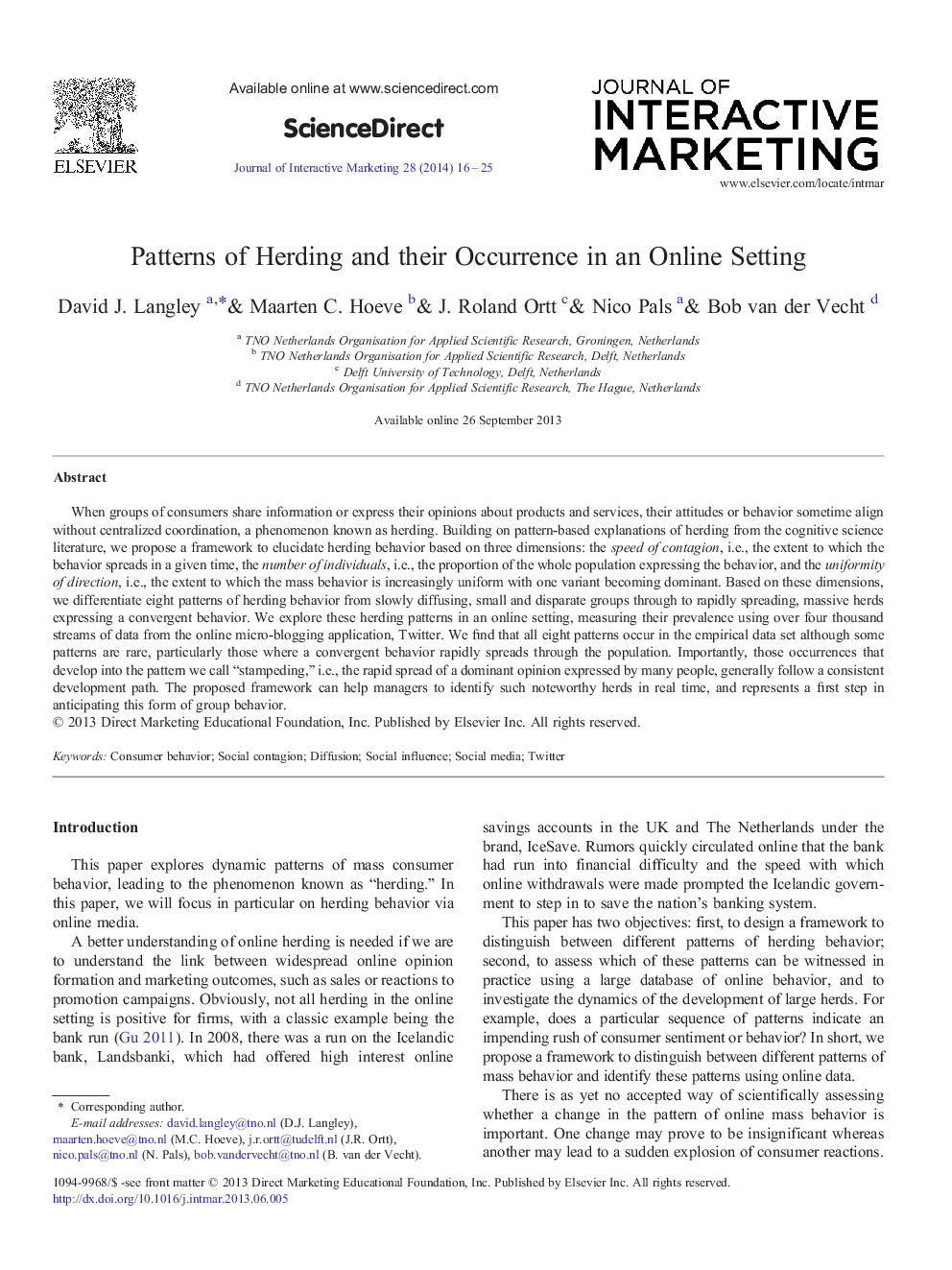| Article ID | Journal | Published Year | Pages | File Type |
|---|---|---|---|---|
| 886000 | Journal of Interactive Marketing | 2014 | 10 Pages |
•We propose a framework of eight patterns of herding.•This is the first study to identify different herding patterns in online data.•Herds which ‘stampede’ have generally followed a consistent development path.•By following changes in the herd brand managers can adapt their actions real-time.•Firms can efficiently focus on the specific patterns they aim to promote / prevent.
When groups of consumers share information or express their opinions about products and services, their attitudes or behavior sometime align without centralized coordination, a phenomenon known as herding. Building on pattern-based explanations of herding from the cognitive science literature, we propose a framework to elucidate herding behavior based on three dimensions: the speed of contagion, i.e., the extent to which the behavior spreads in a given time, the number of individuals, i.e., the proportion of the whole population expressing the behavior, and the uniformity of direction, i.e., the extent to which the mass behavior is increasingly uniform with one variant becoming dominant. Based on these dimensions, we differentiate eight patterns of herding behavior from slowly diffusing, small and disparate groups through to rapidly spreading, massive herds expressing a convergent behavior. We explore these herding patterns in an online setting, measuring their prevalence using over four thousand streams of data from the online micro-blogging application, Twitter. We find that all eight patterns occur in the empirical data set although some patterns are rare, particularly those where a convergent behavior rapidly spreads through the population. Importantly, those occurrences that develop into the pattern we call “stampeding,” i.e., the rapid spread of a dominant opinion expressed by many people, generally follow a consistent development path. The proposed framework can help managers to identify such noteworthy herds in real time, and represents a first step in anticipating this form of group behavior.
